#Marilyn Strathern
Text
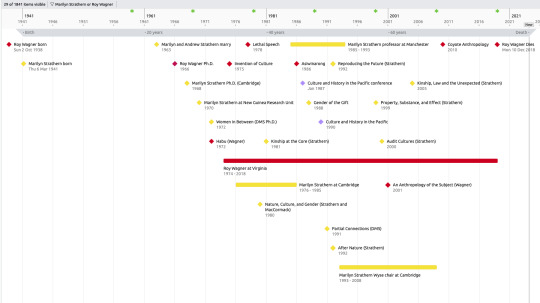
Roy Wagner and Marilyn Strathern are well-known to have been close and influenced each other intellectually. This rough timeline of their two careers shows how much they were in parallel.
1 note
·
View note
Note
so back in 2005-2007 I was an anthropology major, I was told that matriarchies never existed. at the time my professor said that it was kinda sexist that anthropology thought that way. so I wonder if anything has changed since then. I'm not talking about the weird mother goddess cult that hippy 2 wave feminist wanted but like, people who say they are like the muoso (I'm sorry if I spelt that wrong), and other groups. I've heard several native Americans from varrying nation that said their culture was matriarchal, and if modern anthropologist are taught that the experts on society are the people in that society, why do/did anthropologist decided a matriarchal society was impossible. I know this could take a long time to answer so if it's too long for you maybe just some helpful links to an article if you know of one.
So the answer—as always, with anthropology—is complicated.

Saying that XYZ never happened is difficult, given that all it takes is one positive instance to disprove the statement. Yes, there certainly have been (and still are) matriarchal societies. (Please also keep in mind that matriarchal societies aren't inherently better that patriarchal societies based on that one trait alone.)
If I had to guess, what you were told was the product of several theological whiplashes in anthropological theory. And you are indeed correct: some of it has to do with Second Wave Feminism. Archaeology and anthropology have been unfortunately late to the ballgame, and feminism is one of those topics.
Basically, for a long time anthropology was dominated by rich white dudes who believed that men were the center of all anthropological innovations ever (more or less, this is the simplified version). Then in the 80s/90s, Second Wave feminists managed to break into the discipline and the stance went from everything is patriarchal to everything is matriarchal.
"Whoa," said the male anthropologists who were feeling Threatened™ "we don't like that at all." Which results in a second over-correction back to the insistence that there was nothing matriarchal. If I had to guess, this is the general series of events that found its way into your classroom in the mid 00s.
If you fancy a deep dive into a good example of early feminist anthropology, check out The Gender of the Gift: Problems with Women and Problems with Society in Melanesia by Marilyn Strathern (first published in 1988). Or, if you're not inclined to read the whole thing, just read the very last five pages titled Comparison. Or you can read a review of the book from shortly after it first came out.
Other anthropologists are encouraged to chime in, and especially tell me if I've said something wrong.
-Reid
725 notes
·
View notes
Text
Goodhart’s Law
Hi All,
Here’s my daily newsletter navigating the crossroads of business, growth, and life.
If you love this content (please share it), but also…
Check out my Podcast, connect with me on YouTube / Twitter, Subscribe to my weekly newsletter and Join our free slack community
---
Have you ever heard the story about a village where they wanted to rid themselves of the pesky cobra problem. They decided to reward anyone who brought a dead cobra, hoping it would motivate the villagers to help eliminate them.
It worked, until it didn't.
People began breeding cobras just to kill them and claim the reward. The measure became the target. And when the reward was withdrawn? The breeders released the cobras. The village had more cobras than ever.
Peter Drucker noted, “If you can’t measure it, you can’t improve it.” True, yet fraught with pitfalls if misunderstood.
Enter: Goodhart's Law.
“When a measure becomes a target, it ceases to be a good measure.” Says who? Anthropologist Marilyn Strathern, highlighting a truth known to many yet overlooked by more.
We’ve all seen it. The story of the nail factory in Soviet Union? Targets set on the number led to useless tiny nails. When the measure shifted to weight, giant useless nails emerged.
Politicians? Their success, often swayed by approval ratings, can push them to opt for popularity over substance.
Schools? Exams dominate, with the real essence of education often lost amidst the chase for grades.
Hospitals? Patient recovery rates become the focus, sometimes leading to a decline in actual quality of care.
And our researchers? The pressure to 'publish or perish' can sometimes overshadow the value of genuine, impactful research.
But here’s a twist: Goodhart's isn't the only law in town.
Remember that cobra story? It finds resonance in the Cobra Effect, where the solution becomes the problem.
The pressure to corrupt or cheat data to make it fit the desirable measure.
But let’s not throw the measurement baby out with the bathwater.
Goodhart didn't discount measurement. His focus was on the misuse of such metrics, especially when they become the goal themselves.
So how do we move forward?
Pre-Mortems: Before establishing a metric, play devil's advocate. What could go wrong? How could this metric be misused?
Authentic metrics: Use proxies that represent the goal more accurately. It’s harder, yes, but more reflective of the real objective.
Tension in numbers: Use two metrics that counterbalance each other, providing a fuller picture.
Broaden your scope: Don't rely on a single metric. Look for a mix, qualitative and quantitative, to get a true representation.
Metrics are a tool, not the endgame.
In the end, let’s not be the villagers breeding cobras. Let's be aware, adaptive, and always ready to question our measures.
Because while "If you can’t measure it, you can’t improve it," if you don’t measure wisely, you might just end up worse off.
0 notes
Text

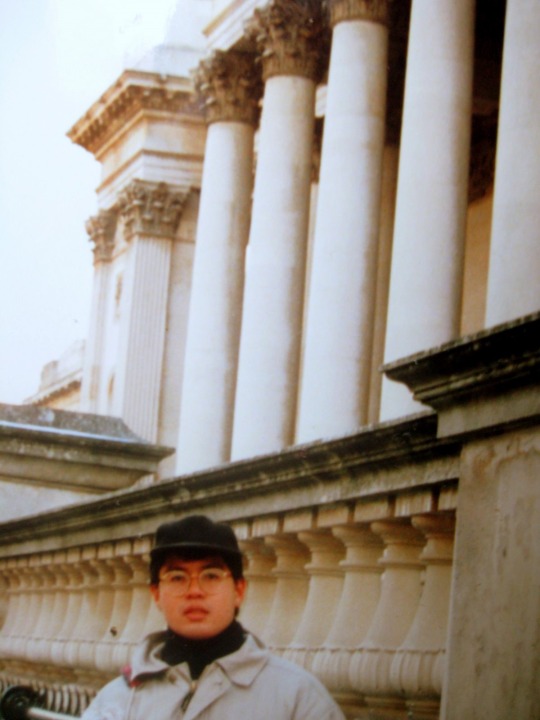








As a University of Cambridge student from the mid-1990s, I remember most the vibrant atmosphere, the formidable academic traditions, and the opportunity to learn from distinguished professors. These made my every day truly remarkable. The stunning architecture of the colleges, especially at King’s, where I had weekly one-on-one consultations with my professors, and Trinity, with its picturesque courtyards, never failed to inspire me.
The rigorous academic curriculum of Cambridge Anthropology challenged me to push my boundaries and exceed my limitations. The program was pioneered by formidable figures like Audrey Richards, Reo Franklin Fortune, Meyer Fortes, Edmund Leach, Ernest Gellner, Jack Goody, Alan Macfarlane, Caroline Humphrey, and Marilyn Strathern, who reshaped the discipline with new approaches to ethnography, knowledge, and relationality.
From attending thought-provoking lectures at the Old Schools to engaging in stimulating debates in every pub across the city, every moment was an opportunity for intellectual growth. The Haddon Library of Archaeology and Anthropology became my sanctuary, where I spent countless hours immersed in books, absorbing knowledge from various movements.
Beyond academics, social life at Cambridge was equally exhilarating. The bustling student community, filled with individuals from diverse backgrounds and cultures, fostered a sense of camaraderie and lifelong friendships. My immediate circle of friends came from Estonia, India, Latvia, Lithuania, Montenegro, Japan, Malaysia, Thailand, and Singapore. Our afternoon walks to Grantchester Mill Pond, daily stopovers to Cambridge University Press, Heffers, Oxfam, and Waterstones bookshops, late-night conversations in coffee shops, punting on and falling into the River Cam, participating in lively Clare Hall and Darwin lectures and viewing screenings of world cinema at Queen’s created memories that will forever be cherished.
1 note
·
View note
Text
am definitely recovering from post- exam term burnout bcs im getting marilyn strathern withdrawals BAD
#born to read 'relations: an anthropological account' forced to work a 9-5 admin job#its fine this job is fine#nourshing protecting this enthusiasm though because it's been so long since i felt it this intensely#protecting this little flame gently with my hands
0 notes
Quote
When a measure becomes a target, it ceases to be a good measure
Marilyn Strathern
0 notes
Text
Marilyn Strathern, Property, Substance, and Effect: Anthropological Essays on Persons and Things, new ed. HAU, 2023 (and open access pdf)
Marilyn Strathern, Property, Substance, and Effect: Anthropological Essays on Persons and Things, new ed. HAU, 2023 (and open access pdf)
Marilyn Strathern, Property, Substance, and Effect: Anthropological Essays on Persons and Things, new ed. HAU, 2023 (paperback January 2023 and open access pdf now)
In engaging essays, celebrated anthropologist Marilyn Strathern reflects on the complexities of social life.
Property, Substance, and Effect draws on Marilyn Strathern’s longstanding interest in the reification of social relations.…
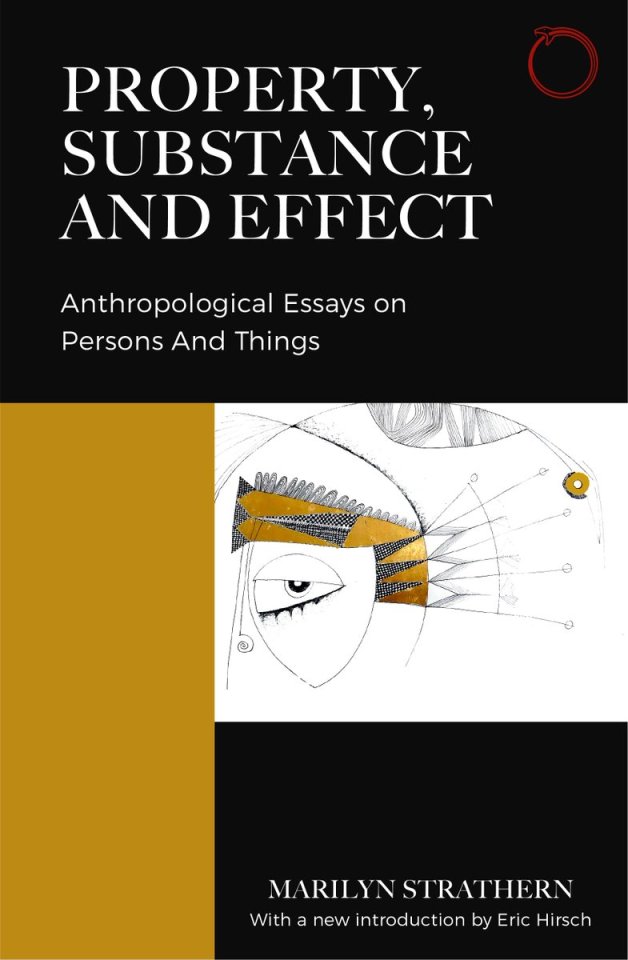
View On WordPress
0 notes
Text
Melanesian public and political activity has a collective character, whereas horticultural production and domestic kinship sustain particular relations. Collective and particular relations are combined and separated in differing ways. Indeed, on occasion, each may provide the rhetoric through which the other is perceived. From the early ethnographic writing on the Highlands, however, one would imagine that Highlanders conceive contrast as between society’ and ‘individual’ or, worse, between ‘nature’ and ‘culture’.
- Marilyn Strathern, The Gender of the Gift
[comentário: após reconceituar as atividades políticas dos grupos clânicos das Terras Altas da Papua Nova-Guiné e colocá-los sob o mesmo domínio analítico das relações de parentesco, Strathern não altera o quadro comparativo já existente no interior da Melanésia -- ainda existem as mesmas diferenças entre fenômenos domésticos e supra-domésticos, intra-clânicos e supra-clânicos, porém, agora a forma de figurar as diferenças é distinta. As linhas, divisões, marcações persistem, mas o modo de gerá-las é distinto.]
0 notes
Text
Catch 22 pdf ebook library
CATCH 22 PDF EBOOK LIBRARY >>Download (Telecharger)
vk.cc/c7jKeU
CATCH 22 PDF EBOOK LIBRARY >> Lire en ligne
bit.do/fSmfG
The Sciences Po library offers a wide range of resources from the HSS Etudiant⸱e⸱s de @sciencespo : suivez la formation Droits et sources des #imagesCollection. Biblio. Catch 22, l'Article 22, est un « attrape-nigaud » qui permet à un colonel américain d'imposer un nombre de missions sans cesse croissant de M Buckland · Cité 289fois — impulse to read Catch 22 as a desire to reduce one's distressing ignorance of what that novel is about. At least one might for the first reading of it, Beinecke Rare Book and Manuscript Library; New World Writing records originally published in issue #7, which became the first chapter of Catch-22. The answer to this question was provided in our 8 CATCH-22: ANTHROPOLOGY, made towards the ethnographic data collection allowing me to test significant Catch-22 - 50th Anniversary Edition eBook by Joseph Heller named to “best novels” lists by Time, Newsweek, the Modern Library, and the London Observer. Aura, Charles Dickens, Conte, Folios, Love Book, Book Worms, Ebook Catch 22 par Joseph Heller Catch 22, Joseph Heller, Books, Movies, Movie. British Library Cataloguing-in-Publication data. A British Library CIP record book imaginable, declaring: '[J]e suis certain qu'il me recevra comme un.
https://www.tumblr.com/fasanunifido/698082552409440256/strathern-marilyn-pdf, https://www.tumblr.com/fasanunifido/698082824615526400/dite-alla-giovine-pdf-merge, https://www.tumblr.com/fasanunifido/698083381979807744/dm-25-agosto-2000-pdf-files, https://www.tumblr.com/fasanunifido/698082552409440256/strathern-marilyn-pdf, https://www.tumblr.com/fasanunifido/698083093242871808/role-of-media-in-society-pdf995.
0 notes
Text
Donna Haraway - Situated Knowledges
Footnote 5
"Aspects of the debates about modernism and postmodernism affect feminist analyses of the problem of "objectivity." Mapping the fault line between modernism and postmodernism in ethnography and anthropology-in which the high stakes are the authorization or prohibition to craft comparative knowledge across "cultures"- Marilyn Strathern made the crucial observation that it is not the written ethnography that is parallel to the work of art as object-of-knowledge, but the culture. The Romantic and modernist natural-technical objects of knowledge, in science and in other cultural practice, stand on one side of this divide. The postmodernist formation stands on the other side, with its "anti-aesthetic" of permanently split, problematized, always receding and deferred "objects" of knowledge and practice, including signs, organisms, systems, selves, and cultures. "Objectivity" in a postmodern framework cannot be about unproblematic objects; it must be about specific prosthesis and always partial translations. At root, objectivity is about crafting comparative knowledge: How may a community name things to be stable and to be like each other? In postmodernism, this query translates into a question of the politics of redrawing of boundaries in order to have non-innocent conversations and connections. What is at stake in the debates about modernism and postmodernism is the pattern of relationships between and within bodies and language. This is a crucial matter for feminists.
See Marilyn Strathern, "Out of Context: The Persuasive Fictions of Anthropology," Current Anthropology 28 (June 1987): 251-81, and "Partial Connections," Munro Lecture, University of Edinburgh, November 1987, unpublished manuscript."
This video was helpful in providing more context on postmodernist arguments.
0 notes
Text
To understand traditional Finnish-Karelian body beliefs and the folk categories of illness connected to väki forces, it is not sufficient to view the body according to the Western model as stable, concrete and bounded. We must turn to concepts borrowed from physics (dynamics and kinetics) – namely energy, force, and movement to conceive of a body in flux and motion. Moreover, the dynamistic system of belief discussed here has important theoretical implications in that it signals a new way of thinking about bodies, objects, agency and motivation. This is where I part company with the cultural relativist position on systems of mythico-magical knowledge which leaves magic to be seen on its own terms, in which it always remains alien, other, ergo “primitive”. I seek to make magic understandable in terms of current western epistemology, within frameworks that are legitimated in our current scientific discourse.
[...]
[...] bodies were not the only actors in the Finnish-Karelian dynamistic world view. Inanimate entities and objects in the body’s environment were also perceived to “act” upon the body – and these acts were motivated, meaning that humans attributed to these objects a will to act, that is, intentionality. These motivated acts by objects blur the line between subject and object, between personal and impersonal force, and thus muddy the analytical distinction between dynamistic beliefs (väkiusko) and animism (haltiausko) made by Finnish scholars in the late 19th and early 20th centuries. I suggest that magical incantations which addressed harmful, väki-filled objects as if they were animate agents were not based upon an erroneous understanding of the true nature of phenomena in the world. Rather, they were based upon a set of logical propositions reminiscent of certain postmodern approaches to the theoretical issue of subject-object relations[...]
[...]Objects of knowledge are brought into being by subjects who do the “knowing”. But, as soon as these objects are constructed, that is, imbued with meaning, they can become very powerful and effective in constructing other, sometimes unexpected and unintended objects. Meaning-filled objects should therefore not merely be viewed as passive and inert matter to be appropriated, but also as active and meaning-generating in themselves.
One of the best anthropological examples of such an “active” object is the gift. The agency bestowed upon the gift by society was noted already by Mauss and elaborated upon by subsequent scholars. In gift-giving, objects have powers of their own, they take on attributes of persons[...]
[...]The work of these scholars raises the entire philosophical question of how we define subjects and objects in Western “rational” thought – and why. It reveals objectification to be the drawing of an illusory, but seemingly “real” and fundamental boundary between the world and the self. Many premises of the Finnish-Karelian mythico-magical world view, and particularly of dynamistic belief systems, dispense with that illusion and operate as if the boundary between the embodied self and the outside world were fluid. Dynamistic orientations to the world do not recognize a fundamental dichotomy between objects and subjects of knowledge, but instead acknowledge the complexity and two-directional nature of subject-object relations. In magical thought, objects have agency.
scraps from the essay "The Dynamistic Body in Traditional Finnish-Karelian Thought" by Laura Stark-Arola, with references to the work of Donna Haraway and Marilyn Strathern.
#hee hee hee hee#obsessed with the gift metaphor#on my language of animacy shit again#quote unquote#linguistics
1 note
·
View note
Quote
'It matters what ideas we use to think other ideas.' I compost my soul in this hot pile. The worms are not human; their undulating bodies ingest and reach, and their feces fertilize worlds. Their tentacles make string figures. It matters what thoughts think thoughts. It matters what knowledges know knowledges. It matters what relations relate relations. It matters what worlds world worlds. It matters what stories tell stories.
Donna Haraway, on Marilyn Strathern’s thought, in Staying with the Trouble.
Follow Diary of A Philosopher for more quotes!
#donna haraway#Marilyn Strathern#Anthropology#Philosophy#Contemporary philosophy#feminist philosophy#feminist#feminism#dark academia#dark academia aesthetic#gradblr#studyblr#philosophy quote#philosophy quotes#climate change#global warming#activism#extinction rebellion#mass extinction#climate anxiety#epistemology#feminist epistemology#quote#quotes#inspiring quotes#ursula le guin#horror
108 notes
·
View notes
Photo
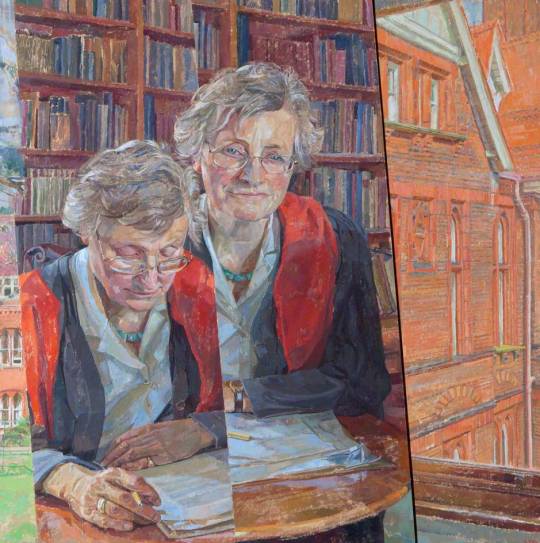
There are many pictures of Marilyn Strathern on the Internet, but this portrait of her as the Mistress of Girton College is particularly wonderful. Via Artuk.org
13 notes
·
View notes
Quote
In theoretical matters, there is never any immaculate conception. Knowledge is produced under determinate circumstances and institutional constraints by thinkers who speak and write from specific positions and as socialized and historical subjects. Surpassing historical and cultural horizons is a superhuman feat. Marx's understanding of the commodity, Mauss' s understanding of the gift, Lévi-Strauss' s understanding of the exchange of women, and, of course, anthropology, as a historically and culturally shaped discourse that named itself 'the study of man', are all as ideologically and metaphysically contaminated as is any feministic framework.
Aletta Biersack in ‘Review: Thinking Difference: A Review of Marilyn Strathern’s “The Gender of the Gift”’ in Oceania, p. 151
#marilyn strathern#anthropology#feminism#theory#academic#marx#mauss#levi-strauss#history#culture#ideology#academia
4 notes
·
View notes
Photo
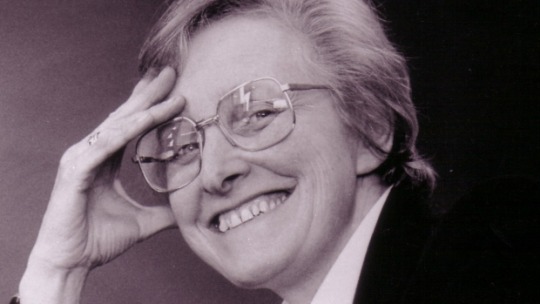
Marilyn Strathern (b. 1941) is a British anthropologist and professor at the University of Cambridge. Her research focused on the Mount Hagen people of Papua New Guinea, as well as on reproductive technologies in the UK.
She was an expert in feminist anthropology, and published numerous works on gender norms and the status of women in the groups she studied. She is a Fellow of the British Academy and has received several honorary degrees from universities around the world.
#born on this day#amazing women#marilyn strathern#women in academia#academia#anthropology#science#women in science#feminist#feminism
257 notes
·
View notes
Quote
The problem with tense is that neither past nor present will really do—the latter suggesting timeless issues, frozen in the ethnographic record, the former that they belong to a vanished and no longer relevant era. Neither, of course, conveys the truth since ideas are not so mobile nor so immobile as any such attempt to locate them suggests.
It is a pity that one is tied to the grammatical choice. And it is a pity that English does not have a dual, for then one could also use 'we' in the sense of 'we two', an inclusion that would not obliterate separateness. Indeed, the work can be read both as an apology and an apologia for a language and a culture that does not make that particular possibility of central concern to the way it imagines itself.
Marilyn Strathern, The Gender of the Gift (1988), xv
8 notes
·
View notes